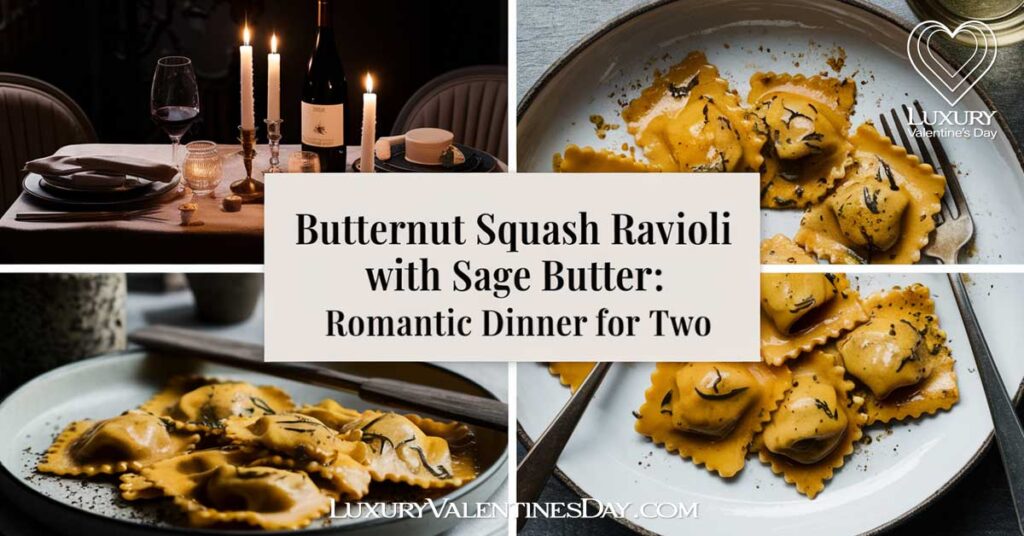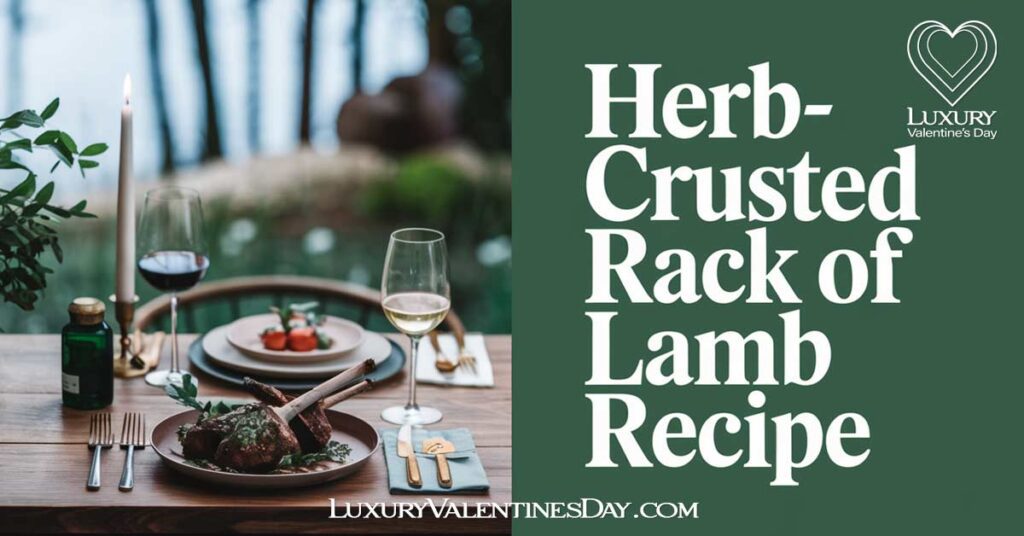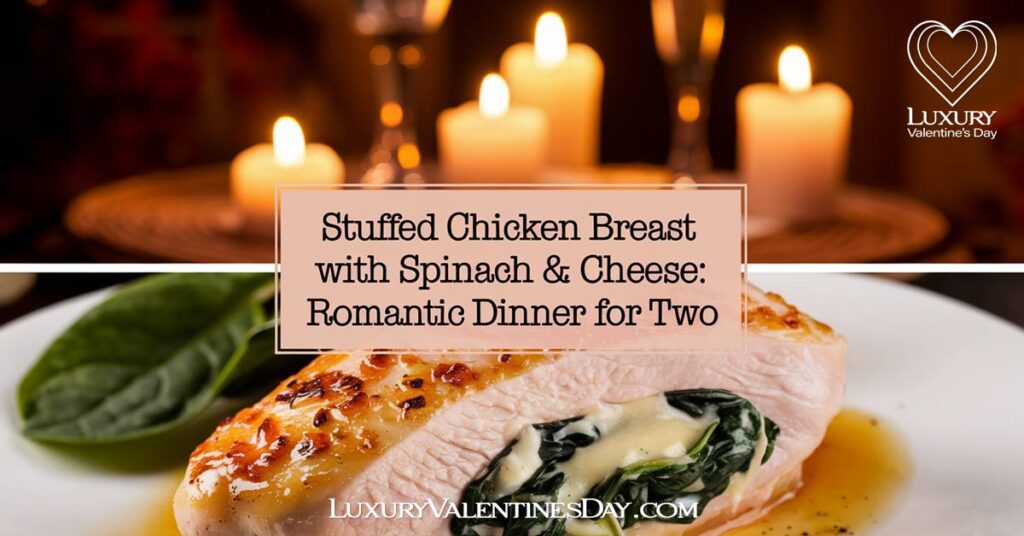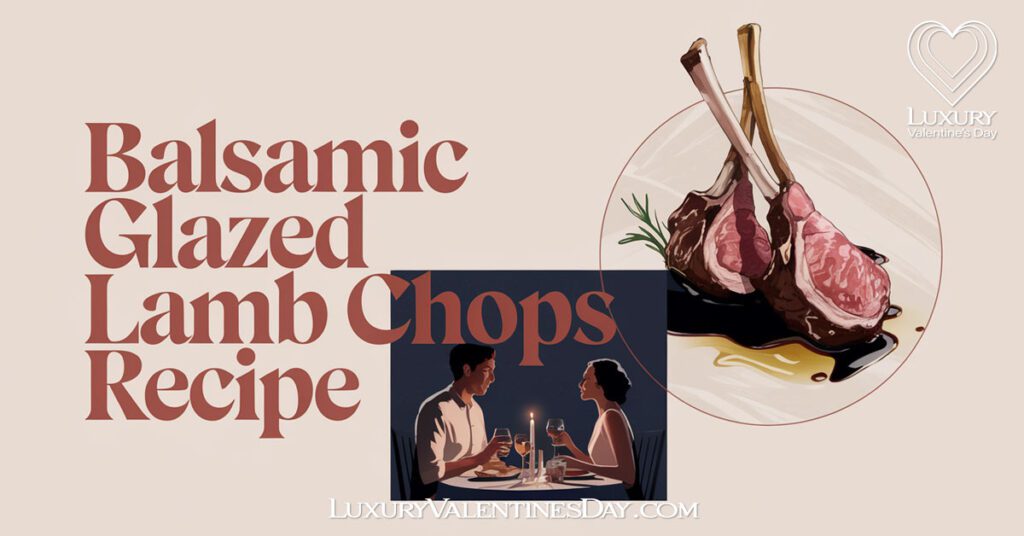
Table of Contents
ToggleExploring the World of Dates: Friendly or Romantic?
Have you ever wondered about the difference between a friendly date and a romantic date? In today’s dating scene, understanding these nuances can make all the difference. This article on “friendly date vs romantic date” sheds light on what sets these two types of dates apart, offering you insights into navigating your relationships with confidence. We’ll guide you through identifying the nature of your next outing, ensuring your dating life is as fulfilling as it can be.
Key Takeaways:
- Discover the Unique Features: Learn the distinct characteristics that define friendly dates and romantic dates. Knowing these can help you set the right expectations for your time together.
- Intentions Made Clear: Get tips on how to decipher the intention behind the date. This knowledge is crucial for communicating your own expectations and understanding your date’s.
- Setting the Scene: Find out how the choice of activities and setting can influence the date’s atmosphere. Whether you’re aiming for a laid-back hangout or an intimate evening, we’ve got you covered.
- Navigating the Date: We’ll offer advice on how to smoothly navigate the waters of both friendly and romantic dates. From initiating the first outing to making sure both parties are on the same page, you’ll be prepared for any dating scenario.
Understanding Friendly Dates: The Hallmarks and How They Shape Relationships

Friendly dates are all about connection without the pressure of romance. But what exactly makes a date “friendly“? It’s the vibe, the expectations, and the activities that set the tone. Friendly dates often involve doing things both people enjoy, where the focus is on fun and companionship. Think of going to a concert, enjoying a casual meal together, or a group outing with friends. These settings allow for relaxed conversations and shared experiences without the romantic undertones.
Ideal Settings and Activities for Friendly Dates
When planning a friendly date, choose environments that are laid-back and conducive to open, easy dialogue. Public places like coffee shops, parks, or art galleries offer a neutral ground that keeps the date casual. Activities should be ones that encourage camaraderie and mutual interests—perhaps a cooking class, a casual bike ride, or attending a local event together. The goal is to enjoy the activity for what it is, with someone whose company you appreciate.
Managing Expectations and Respecting Boundaries
Clear communication is crucial to ensure both parties understand the nature of the outing. It helps to be upfront about your intentions by saying something like, “I’ve been wanting to check out this new exhibit and thought you might enjoy it too.” This sets the tone for a friendly date. Respecting boundaries also means acknowledging that this is not a romantic outing. Physical contact should be considerate of the other person’s comfort level, and conversations should steer clear of overly personal or intimate topics unless naturally broached by both.
The Benefits of Friendly Dates: How Friendly Dates Enhance Personal Connections

Friendly dates come with a host of benefits that enrich our social lives and deepen our connections with others. These casual outings are a cornerstone of building strong, platonic relationships, fostering a sense of ease and mutual respect. Let’s explore how friendly dates can positively impact our lives.
Deepening Friendships Without Romantic Pressure
One of the most significant advantages of friendly dates is the opportunity they provide to deepen friendships. These dates allow individuals to get to know each other better in a relaxed atmosphere. Without the expectations of romance, conversations flow more freely, and both parties can be their genuine selves. This authenticity is the foundation of a strong friendship.
Reducing Dating Pressure
The casual nature of friendly dates significantly reduces the pressure often associated with traditional dating. There’s no need to impress or worry about where the relationship is headed. Instead, the focus is on enjoying the moment and the activity. This can be particularly refreshing in today’s fast-paced dating world, where every date can sometimes feel like it has to lead somewhere significant.
Laying a Solid Groundwork for Understanding Each Other
Friendly dates offer a unique opportunity to understand each other’s likes, dislikes, and personalities outside of a romantic context. This understanding is invaluable, whether the friendship remains platonic or eventually evolves into something more. Gaining insight into how someone interacts in various settings can reveal a lot about their character and compatibility as a friend or potential partner.
By focusing on the joy of shared experiences and the comfort of companionship, friendly dates remind us that not every social outing needs to have romantic implications. They allow us to build and maintain diverse relationships that enrich our social circles and emotional well-being.
Understanding the Challenges: Navigating the Cons of Friendly Dates

Even with their many benefits, friendly dates are not without their challenges. Recognizing these potential drawbacks is key to navigating them effectively. Let’s delve into the cons of friendly dates and how they can sometimes complicate friendships.
Risk of Misinterpretation
One of the most common issues with friendly dates is the risk of misinterpretation. What one person views as a purely platonic outing, another might see as having romantic potential. This disparity in understanding can lead to awkward situations or hurt feelings if not addressed openly and honestly.
Unreciprocated Romantic Feelings
Closely related to the risk of misinterpretation is the possibility of unreciprocated romantic feelings developing. Spending time together on what one perceives as friendly dates can sometimes lead to one person developing deeper feelings for the other. If these feelings are not mutual, it can strain the friendship and create discomfort for both parties.
Challenges in Transitioning to Romance
For friendships that do have the potential to turn romantic, friendly dates can sometimes make the transition more complicated. The established dynamic of casual outings may make it difficult for one person to express their changing feelings, fearing it could jeopardize the friendship. This situation requires careful handling and open communication to navigate successfully.
Despite these challenges, the key to successful friendly dates lies in clear communication and mutual respect. Being upfront about intentions from the start can help mitigate the risk of misinterpretation and ensure that both parties are on the same page. It’s also important to be attentive to the other person’s feelings and signals, adjusting your approach as necessary to maintain a healthy and respectful relationship.
Friendly dates, with their unique blend of companionship and casual fun, remain a valuable aspect of building and sustaining relationships. By understanding both the benefits and the potential drawbacks, you can enjoy these outings to their fullest, enriching your social life and deepening your connections with others.
This table aims to give you a balanced view of friendly dates, highlighting their potential to enrich social lives while acknowledging the challenges that might arise. Understanding these aspects can help you navigate your personal relationships with greater awareness and sensitivity.
| Pros of Friendly Dates | Cons of Friendly Dates |
|---|---|
| Deepens Friendships – Offers a relaxed setting to strengthen bonds without romantic pressure. | Risk of Misinterpretation – Activities and intentions might be misunderstood as romantic interest. |
| Reduces Dating Pressure – Enjoyable moments without the stress of where the relationship is heading. | Unreciprocated Romantic Feelings – One party may develop feelings that aren’t reciprocated, leading to awkwardness. |
| Lays Solid Groundwork for Understanding – Casual outings provide insights into personalities and compatibilities. | Challenges in Transitioning to Romance – Moving from a platonic to a romantic relationship can be complicated and risky. |
| Encourages Authenticity – Being oneself without the need to impress, fostering genuine connections. | Potential Strain on Friendship – Navigating from friendship to romance or dealing with unmet expectations can test the relationship. |
Deciphering the Signs: What Makes a Date Romantic?
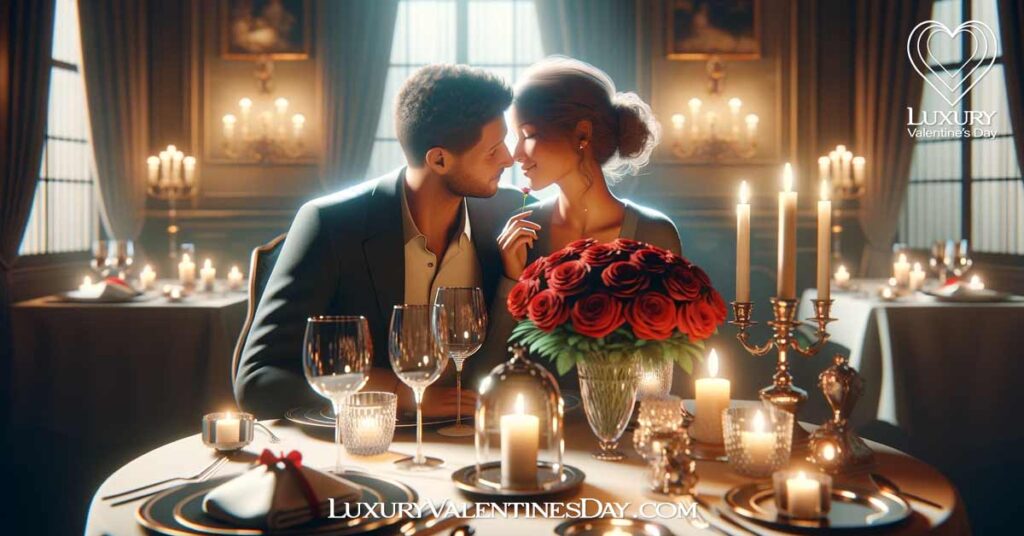
Recognizing a romantic date often comes down to the details—those little signals that reveal an outing is more than just two friends hanging out. Here are key indicators that you’re on a romantic date:
Planned Atmosphere: Unlike the spontaneous or casual vibe of friendly dates, romantic dates often involve a bit of planning to create a special atmosphere. This could mean choosing a cozy restaurant with dim lighting, a quiet walk under the stars, or a picnic in a secluded spot in the park.
Personalized Activities: If the date involves activities tailored to your interests or shared experiences that require a bit more effort to arrange, it’s a good sign that romance is in the air. These activities are chosen to create moments of connection and show care and thoughtfulness.
Physical Affection: Subtle gestures like holding hands, light touches, or a meaningful hug can indicate romantic interest. These actions go beyond the casual interaction you might expect from a friend and show a desire for closer physical proximity.
Focused Attention: On a romantic date, you can expect your date’s undivided attention. This means less checking of phones and more eye contact, active listening, and engaging in deep conversations. The intent is to connect on an emotional level, showing that you’re both interested in more than just a friendly outing.
Crafting the Perfect Ambiance: Settings and Activities for Romantic Dates
Choosing the right setting and activities is crucial for nurturing the closeness that defines a romantic date. Here’s how to create an environment that fosters intimacy and connection:
Selecting the Right Setting
The setting plays a pivotal role in establishing the romantic tone of the date. Opt for places that are intimate, quiet enough to hold a conversation, and have a certain charm or beauty. Think candlelit dinners at a restaurant with a view, a stroll through a botanical garden, or a cozy café corner. These environments encourage personal sharing and create a backdrop for memorable moments.
Activities That Bring You Closer
Engage in activities that allow you to share experiences and learn more about each other. This could be a cooking class where you can enjoy creating a meal together, a dance class that requires teamwork and physical closeness, or even a museum visit that sparks conversation about art and life perspectives. The goal is to choose activities that elicit joy and deepen your emotional connection.
The Importance of Communication
Effective communication is the cornerstone of a successful romantic date. This means sharing your thoughts, listening actively, and expressing appreciation for the time spent together. Discuss topics that matter to you both, share stories from your lives, and ask thoughtful questions. This mutual exchange nurtures a deeper understanding and emotional intimacy.
Creating a romantic date isn’t just about the place or activity; it’s about making the effort to connect on a deeper level. By choosing the right setting and activities, you pave the way for a date that’s not just enjoyable but also meaningful.
Embracing and Navigating: The Pros and Cons of Romantic Dates

Romantic dates, with their potential to deepen connections and spark romance, come with their own set of advantages and challenges. Understanding these can help you fully appreciate the joys of romantic dating while being prepared for the hurdles.
The Benefits of Romantic Dates
- Emotional Intimacy: Romantic dates provide a fertile ground for building emotional intimacy. Through shared experiences and heartfelt conversations, you forge a deep bond that can serve as the foundation for a lasting relationship.
- The Thrill of Romance: There’s an undeniable excitement that comes with romance—the anticipation of meeting, the joy of getting to know someone on a deeper level, and the butterflies that accompany moments of closeness.
- Clarity of Intentions: Romantic dates make intentions clear. Both parties understand that there’s a mutual interest in exploring a romantic connection, which eliminates the guesswork and ambiguity often present in early dating stages.
The Cons of Romantic Dates
- Pressure of Expectations: The flip side of the clarity of intentions is the pressure it may bring. Knowing that a date has romantic implications can heighten anxiety about making everything perfect, from conversation to activities.
- Fear of Rejection: With romantic interests openly on the line, the fear of rejection becomes more pronounced. It’s natural to worry about whether your feelings are reciprocated and what a “no” might mean for the budding relationship.
- Awkwardness When Feelings Aren’t Mutual: If one person feels a stronger romantic connection than the other, it can lead to awkward situations. Navigating these moments requires sensitivity and may sometimes result in the end of a potential relationship.
Despite these challenges, the allure of romantic dates lies in their ability to bring two people closer together, offering a glimpse into a future filled with shared moments and mutual affection. The key to overcoming the cons lies in open communication, managing expectations, and embracing the journey of getting to know someone, with all its highs and lows.
Romantic dates, with their intricate dance of emotions and intentions, are a testament to the human desire for connection and love. By understanding both the benefits and potential pitfalls, you can approach dating with a balanced perspective, ready to enjoy the beauty of romance while navigating its complexities with grace.
| Pros of Romantic Dates | Cons of Romantic Dates |
|---|---|
| Emotional Intimacy – Romantic dates offer a chance to build deep emotional connections, allowing both parties to share feelings and experiences on a profound level. | Pressure of Expectations – The romantic context can create pressure to ensure everything is perfect, from conversation to the choice of activities, which can be stressful. |
| The Thrill of Romance – The anticipation and excitement of romance add a unique spark to dating, enhancing the connection between two people. | Fear of Rejection – Putting one’s feelings out there in a romantic setting heightens the fear of not having those feelings reciprocated, leading to potential heartache. |
| Clarity of Intentions – Romantic dates make it clear that both individuals are interested in exploring a relationship beyond friendship, reducing ambiguity. | Awkwardness When Feelings Aren’t Mutual – Discovering that one person is more invested in the relationship than the other can lead to discomfort and awkward situations. |
| Opportunity for Growth – Navigating the dynamics of romantic dates can lead to personal growth, as individuals learn more about their relationship needs and how to communicate them effectively. | Potential for Misunderstanding – Despite the best intentions, signals can be misread, leading to misunderstandings about the seriousness or direction of the relationship. |
This table aims to provide a balanced view of romantic dates, acknowledging their potential to enrich our romantic lives while also recognizing the emotional challenges they may present. Understanding these aspects can help you approach romantic dating with a more informed and thoughtful perspective.
Do you need some fun date ideas? If so, check out our date ideas guide.
Blurred Lines: Understanding the Grey Area Between Friendly and Romantic Dates

The distinction between friendly and romantic dates isn’t always clear-cut. Often, we find ourselves in situations where the nature of an outing feels ambiguous, leaving us to wonder about the intentions behind the invitation. Here are some scenarios that highlight this grey area and tips for navigating these uncertain waters.
Scenarios of Ambiguity
- Group Outings Turning Solo: What starts as a group activity may end up as an unexpected one-on-one. The shift from a group dynamic to a solo encounter can change the vibe, making it harder to gauge the intent.
- Frequent Communication: When texts, calls, and social media interactions with someone increase in frequency and intimacy, it can blur the lines. The content of these exchanges might hint at more than friendship, but without clear indicators, it’s challenging to be sure.
- Physical Touch: Casual touches, like a hand on the back or an extended hug, can be common in friendships. However, when these gestures become more frequent or intimate, they can signal a shift toward romantic interest.
Interpreting Mixed Signals
Mixed signals often arise from these scenarios, leaving you to decipher the other person’s intentions. Pay attention to consistency in behavior—frequent, intimate gestures that go beyond typical friendship boundaries might indicate more than platonic interest. Also, consider the context of your interactions. Are they seeking you out for one-on-one time more often? Do conversations veer into personal or emotional territories?
Clearing the Fog: Strategies for Clarifying Intentions in Ambiguous Dating Situations

When you find yourself navigating the murky waters between friendly and romantic dates, the key to clarity lies in communication. Here’s how to approach these situations to understand and clarify the intentions behind your interactions.
Open Dialogue
The most straightforward way to clarify intentions is through an honest conversation. It might feel daunting, but expressing your feelings and asking for clarity can prevent misunderstandings. Approach the topic with openness, saying something like, “I’ve really enjoyed our time together and I’m wondering how you view our relationship. I just want to make sure we’re on the same page.”
Observing Reactions
The way someone responds to your attempts to clarify intentions can be very telling. If they’re open and responsive, it suggests they’re willing to navigate this grey area together. However, if they’re evasive or uncomfortable, it may indicate they haven’t fully considered their feelings, or they prefer to keep things ambiguous.
Setting Boundaries
Regardless of the outcome of your conversation, it’s important to set boundaries that reflect your comfort level with the relationship’s current state. If you’re not ready to move into a romantic relationship, or if you wish to remain friends, communicate this clearly. Boundaries help ensure that both individuals feel respected and understood, no matter the nature of their relationship.
Managing Expectations
Finally, managing your own expectations is crucial when clarifying intentions. Be prepared for any response, and remember that the other person’s feelings may not always align with yours. Respecting their perspective and deciding how you want to proceed based on their response will help you maintain a healthy dynamic, whether it continues as a friendship or evolves into something more.
Clarifying intentions in the grey area between friendly and romantic dates is essential for maintaining healthy relationships. By fostering open communication, observing reactions, setting clear boundaries, and managing expectations, you can navigate these ambiguous situations with confidence and grace, ensuring that both parties feel valued and respected.
Signs It’s Time: Recognizing When Friendship Turns Into Romance

Transitioning from a platonic friendship to a romantic relationship can be a significant change. Recognizing the right moment for this shift involves observing subtle changes in behavior and feelings. Here are indicators that it might be time to consider evolving your friendship into something more.
Increased Emotional Intimacy
When conversations start to delve deeper than usual, sharing personal dreams, fears, and desires, it’s a sign that your relationship is moving beyond the realm of casual friendship. This emotional intimacy lays a strong foundation for a romantic connection.
Desire for More One-on-One Time
If you or your friend are seeking more opportunities to spend time alone together, it might indicate a shift in feelings. Especially if these occasions involve more thoughtful activities or settings that are conducive to romance, like candlelit dinners or long walks alone.
Physical Affection and Attraction
An increase in physical touch, such as holding hands or cuddling during a movie, can signal growing romantic feelings. If these gestures feel natural and are reciprocated, it’s a strong indicator that your relationship is venturing into romantic territory.
Jealousy or Possessiveness
Feeling jealous or possessive when the other person shows interest in someone else, or dates others, can reveal hidden romantic feelings. While these emotions need to be handled carefully, they can be a clear sign that you value the person in more than just a friendly context.
Recognizing these signs in your friendship can help you understand your feelings better and consider if transitioning to a romantic relationship is the right step for both of you. In the next part, we’ll discuss how to navigate this delicate change with care and respect.
Smooth Transitions: Navigating From Platonic to Romantic With Care

Moving a friendship into a romantic phase is a delicate process that requires sensitivity, communication, and respect. Here’s how to approach this transition, ensuring both parties feel comfortable and valued throughout the journey.
Open Communication is Key
The first step in transitioning from friends to lovers is to have an open and honest conversation about your feelings. It’s important to express yourself clearly but also to prepare for any outcome. Begin the conversation in a non-threatening setting, and make it clear that the friendship is valuable to you, regardless of their romantic interest.
Take it Slow
Rushing the transition can overwhelm both parties and jeopardize the existing friendship. Allow the relationship to develop at a comfortable pace, giving both individuals time to adjust to the new dynamics. This gradual approach helps build a stronger foundation for a lasting romantic relationship.
Respect Their Feelings
It’s crucial to be prepared for the possibility that your friend may not share your romantic feelings. If this happens, it’s important to respect their feelings and decision. Maintaining the friendship after such a disclosure requires understanding and the willingness to move past any awkwardness.
Celebrate the Change
If your friend shares your romantic feelings, embrace this new phase of your relationship with enthusiasm but continue to nurture the friendship at its core. Remember, the strongest romantic relationships are built on deep friendship, mutual respect, and shared experiences.
Navigating Boundaries
As your relationship transitions, re-establish boundaries that reflect your new status. Discuss comfort levels, expectations, and how you’ll navigate challenges together. This conversation can strengthen your connection and ensure both parties feel secure and respected.
Transitioning from friendship to romance is a journey filled with potential for deep connection and growth. By approaching the shift with open communication, patience, and respect for each other’s feelings, you can explore this new phase of your relationship with confidence and joy. Remember, the best romantic relationships are those that are rooted in friendship, understanding, and mutual care.
Real Connections Unveiled: Navigating the Journey from Friendship to Love

Embarking on the journey from friendship to romance is a path filled with nuanced emotions, unexpected turns, and invaluable lessons. The following are examples that delve into the heart of what it means to transition from platonic to romantic relationships, offering a closer look through real-life scenarios. Each story is a mirror reflecting the delicate dance of intentions, the importance of clear communication, and the joy of discovering love within a bond of friendship. As we explore these anonymized, yet relatable case studies, we’ll uncover the insights and strategies that can guide us through the complex yet rewarding landscape of modern dating. Whether you’re contemplating taking the next step with a friend or simply curious about the dynamics of such transitions, these narratives promise to enlighten and inspire.
Case Study 1: From Friendship to Romance
Scenario: Alex and Jordan had been friends since college, sharing many interests and a close-knit circle of friends. Over time, their one-on-one hangouts became more frequent, and the conversations shifted from casual to personal and intimate. Both started feeling a deeper connection but were hesitant to risk the friendship without knowing the other’s feelings.
Lesson: The turning point came when Alex brought up their evolving relationship during a casual walk in the park. This open, honest conversation revealed that Jordan shared these feelings, leading them to decide to explore a romantic relationship, all while agreeing to communicate openly to preserve their friendship regardless of the outcome.
Insight: This scenario underscores the importance of communication in transitioning from friendship to romance. It shows that while the risk of changing the dynamic is significant, the potential for a deeper connection can be worth it. The key is approaching the conversation with care, honesty, and an open heart.
Case Study 2: Interpreting the Nature of a Date
Scenario: Sam invited Riley to a dinner at a nice restaurant under the guise of celebrating a mutual achievement. The setting felt more intimate than their usual outings, leaving Riley wondering if this was meant to be a date or just a celebration between friends.
Lesson: Riley decided to ask Sam directly about the nature of the dinner. Sam admitted to wanting it to be a date but was unsure how to convey this intention without making Riley uncomfortable. This honest exchange cleared the air, allowing them to move forward with a mutual understanding of their intentions.
Insight: This case study highlights the challenges of interpreting the nature of a date and the significance of clarifying intentions early on. Direct communication can prevent misunderstandings and set the foundation for a relationship, whether platonic or romantic.
Case Study 3: Navigating Early Stages of a Romantic Relationship
Scenario: Taylor and Morgan recently transitioned from friends to a romantic relationship. Their first few dates were filled with excitement but also anxiety about how to balance their newfound romance with their established friendship.
Lesson: They found that continuing to engage in activities they enjoyed as friends, while incorporating new, romantic elements into their dates, helped ease the transition. They made it a point to check in with each other regularly about their feelings and the pace of the relationship.
Insight: This scenario illustrates that maintaining the foundation of friendship is crucial in the early stages of a romantic relationship. It emphasizes the importance of patience, mutual respect, and ongoing communication as key elements in deepening a romantic connection while preserving the original friendship.
These case studies provide a glimpse into the nuanced world of dating, offering valuable lessons on navigating the complexities of relationship dynamics. Each story serves as a reminder of the universal challenges and joys that come with exploring romantic connections.
Friendly Dates vs. Romantic Dates: Navigating Your Dating Journey

When it comes to the world of dating, one size definitely does not fit all. The choice between pursuing friendly dates or romantic dates is deeply personal and varies significantly based on individual circumstances, intentions, and long-term relationship goals. So, how do you decide which path is right for you? Let’s explore the merits of each to help you make informed decisions in your dating life.
Evaluating Dating Options: The Merits of Friendly and Romantic Dates
Friendly Dates
These are characterized by their laid-back nature, absence of romantic expectations, and the freedom they offer to explore new experiences with someone you enjoy spending time with. They’re an excellent option for those who value building a strong foundation of friendship before, or instead of, pursuing a romantic relationship. Friendly dates can reduce the pressure often associated with dating, allowing individuals to be themselves and connect on a more genuine level.
- Pros:
- Less pressure to impress, leading to more authentic interactions.
- Opportunity to build a solid friendship, regardless of romantic potential.
- Flexibility in activities and settings, making it easier to enjoy shared interests.
- Clear boundaries that help maintain comfort and respect for both parties.
- Cons:
- Potential for mixed signals or misinterpretation of intentions.
- Risk of one party developing romantic feelings that are not reciprocated.
- Might lack the depth of emotional intimacy found in romantic relationships.
Romantic Dates
These are pursued with the intention of exploring a potential romantic connection. They often involve more planning and thought to create an ambiance that fosters intimacy and emotional connection. Romantic dates are suited for those who are clear about their attraction and interest in pursuing a relationship beyond friendship.
- Pros:
- Opportunity to deepen emotional intimacy and explore romantic compatibility.
- Clear intentions from the outset, reducing ambiguity about the relationship’s direction.
- Heightened excitement and anticipation that comes with romantic attraction.
- Potential to develop a lasting romantic partnership that fulfills emotional and physical needs.
- Cons:
- Increased pressure and expectations, which may lead to anxiety or stress.
- The risk of rejection and the emotional impact of unreciprocated feelings.
- Navigating the transition from dating to a committed relationship can be challenging.
The Crucial Role of Communication and Understanding
Regardless of which type of date you lean towards, the cornerstone of any successful relationship—be it friendly or romantic—is open communication and understanding. Discussing your intentions, feelings, and expectations openly can prevent misunderstandings and ensure that both parties are comfortable and on the same page. This mutual understanding allows for a more fulfilling and respectful connection, regardless of the nature of your relationship.
Which is Better?
The answer to “which is better, friendly dates or romantic dates?” lies in your personal desires, relationship goals, and the specific dynamics between you and the person you’re interested in. Some may find the deep emotional connection and intimacy of romantic dates to be their preference, while others may value the relaxed atmosphere and authenticity of friendly dates. Ultimately, the best choice is the one that aligns with your individual needs and the mutual understanding between you and your date. Remember, the journey of dating is as much about discovering what you want and need in a relationship as it is about finding a compatible partner.
FAQs: Navigating the Nuances of Dating

In the realm of modern dating, distinguishing between different types of dates and understanding their dynamics can be puzzling. Whether you’re navigating the early stages of a potential romance or exploring the boundaries of friendship, having your questions answered can provide clarity and confidence. Below, we tackle some of the most common queries about friendly dates, romantic dates, and everything in between.
What does a friendly date mean?
A friendly date refers to an outing between two individuals who enjoy each other’s company without romantic intentions. It’s characterized by casual activities, genuine conversations, and an emphasis on fun and camaraderie rather than romance.
Can you go on a friendly date?
Absolutely! Friendly dates are a great way to strengthen bonds, explore new experiences together, and enjoy the company of someone you appreciate without the pressures of romantic expectations.
Should a first date be romantic or casual?
This depends on your mutual feelings and the nature of your relationship. A casual first date can ease the pressure, allowing both parties to be themselves. If there’s a mutual interest in exploring a romantic connection, a date with a more romantic setting can signal your intentions.
What is the difference between a date and a friend date?
The main difference lies in the intentions behind the outing. A date typically implies romantic interest, with activities and conversations geared toward exploring a potential relationship. A friend date focuses on enjoying each other’s company platonically, without romantic expectations.
How do you act on a friendly date?
Be yourself, relax, and enjoy the interaction without the pressure to impress. Engage in activities you both enjoy, and use the opportunity to learn more about each other’s interests and personalities.
What is the difference between friendly and flirty?
Friendly behavior is characterized by gestures and conversations that express interest in the other person’s well-being and enjoyment. Flirty behavior adds a layer of sexual or romantic innuendo, suggesting interest beyond friendship.
When a guy says hangout instead of date?
The term “hangout” typically suggests a casual, low-pressure gathering, often implying friendship or a relaxed getting-to-know-you session, rather than a formal date with romantic implications.
Is it a date or just hanging out?
Context and communication are key. If intentions aren’t clearly communicated, it can be hard to distinguish. A date usually has a defined romantic interest, while hanging out is more about enjoying each other’s company without explicit romantic expectations.
How can I tell if my friend wants more than a friendly date?
Look for signs like increased physical touch, deep and personal conversations, or a desire to spend more one-on-one time together. These can indicate a shift from platonic to romantic interest.
What are some clear signs a date is intended to be romantic?
Romantic dates often involve careful planning, a private or intimate setting, and activities designed to foster closeness. Other indicators include flirtatious behavior, compliments, and discussions about future plans together.
How do I communicate my intentions without making it awkward?
Be honest and direct, but gentle. Express your feelings or intentions clearly, emphasizing that you value the relationship and are open to understanding their feelings, regardless of whether they share your romantic interest.
Understanding the subtleties of dating can enhance your experiences and help you navigate your relationships more effectively. Remember, clear communication and mutual respect are the cornerstones of any successful interaction, whether friendly or romantic.
Fostering Genuine Connections: The Role of Honesty and Communication in Dating

As we navigate the intricate dance of modern dating, the pillars of honesty and communication stand out as essential guides on this journey. Whether embarking on a friendly date or exploring the potential of a romantic connection, the clarity and authenticity we bring to these interactions define their quality and depth.
The Foundation of Trust
At the heart of any meaningful relationship lies trust, built on the bedrock of honesty. By being open about our feelings, intentions, and desires, we invite our dating partners to understand our true selves. This transparency not only nurtures trust but also deepens our connections, allowing relationships to flourish on a foundation of authenticity.
The Art of Communication
Effective communication extends beyond mere honesty; it’s about expressing our thoughts and feelings in a way that is clear, respectful, and considerate of the other person’s perspective. It involves active listening, empathy, and the willingness to engage in dialogues that may sometimes be challenging. In the realm of dating, mastering this art can help us navigate the complexities of human emotions and relationships, ensuring that both parties feel heard, valued, and understood.
Navigating Vulnerability
Opening up about our feelings and desires makes us vulnerable, a state that, while daunting, can lead to profound connections. Embracing vulnerability as a strength rather than a weakness encourages genuine interactions and paves the way for relationships built on mutual respect and emotional intimacy.
The Path to Fulfilling Relationships
By prioritizing honesty and communication, we empower ourselves and our dating partners to make informed decisions about the future of our relationships. This approach not only minimizes misunderstandings and heartache but also fosters a dating culture that values integrity, respect, and emotional well-being.
My Final Thoughts
The world of dating, with its joys, challenges, and uncertainties, offers endless opportunities for personal growth and connection. As we journey through this landscape, let us hold fast to the principles of honesty and communication. By doing so, we open the door to relationships that are not only romantically fulfilling but also enrich our lives with deep, personal connections. Remember, in the end, the most enduring relationships are those grounded in truth, understanding, and a genuine appreciation for one another.
Do You Need Some Date Ideas?
If you are struggling to come up with some ideas, check out out date night suggestions.
Related Posts
- Date Ideas That Start with E: Exciting and Enchanting Dates
- Embossed Decorated Cookies: Techniques for Unique Textured Designs
- Date Ideas That Start with Q: Quaint and Quirky Dates
- Classic Sugar Cookie Reciepe For Valentine’s Day
- The Life and Times of St. Valentine: The Man Behind February 14
- How to Find Unique Valentine’s Day Events Near You









